Braden Storytelling Grant
Each year, the Stanford Storytelling Project awards Braden Grants to a small number of students to support the research, writing, and production of audio documentaries. The aim of the program is to help students learn how to tell powerful, research-driven stories based on testimony they gather through interviews, research, or oral history archives. Grantees receive up to $2,500, as well as teaching, training, and mentorship during the period of the grant (March-December). In January of each year, all of the documentaries are aired on KZSU and published on the Soundings podcast. All pieces will be considered for inclusion in State of the Human, the SSP’s premier, award-winning podcast. State of the Human episodes are aired weekly on KZSU, Stanford’s public radio station, and some stories reach national broadcast outlets.
Episodes
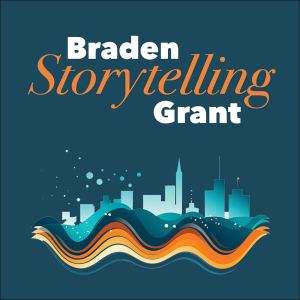
Saturday Dec 21, 2024
Saturday Dec 21, 2024
Each year, the Stanford Storytelling Project awards Braden Grants to support the research, writing, and production of audio documentaries. The aim of the program is to help students learn how to tell powerful, research-driven stories based on testimony they gather through interviews, research, or oral history archives. Grantees receive up to $2,500, along with teaching, training, and mentorship for the duration of the project.
Here's what the 2023 Grantees had to say about their experience.
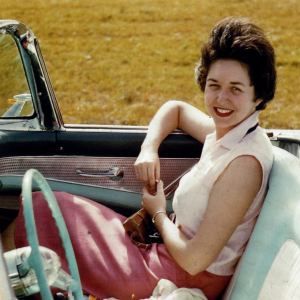
Wednesday Dec 18, 2024
Wednesday Dec 18, 2024
How Patsy Cline shifted the country music industry--and a whole country's idea of femininity.
Interviewees:Ellis NasserMargaret JonesSources:Country Music USA by Bill C. MaloneCreating Country Music by Richard A. PetersonSelling Tradition: Appalachia and the Construction of an American Folk by Jane E.Song Catchers, Ballad Makers, and New Social Historians: The Historiography of Appalachian MusicMusic by Patsy Cline & Blue Dot Sessions
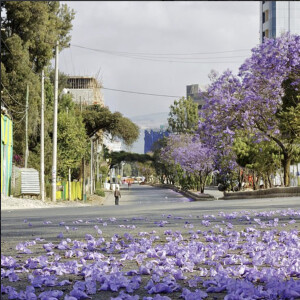
Tuesday Dec 17, 2024
Tuesday Dec 17, 2024
"New Flowers" explores the history of Addis Ababa's Piassa's neighborhood: its birth, destruction, and what sense of home remains.
Includes interviews with Paul Buddenhagen, Sine Berhanu, Messay GesesseMikael Shebele, Dany Dereje, and Yalew Berhanu.Music:Mulatu Astatke: "Tezeta," "Tension," "Yekeremo Sew," "Yegelle Tezeta"Daniele Serra

Tuesday Dec 17, 2024
Tuesday Dec 17, 2024
Digital diagnosis explores how telehealth is changing the physician patient relationship. Through interviews with both physicians and patients we uncover where telehealth shines and where it falls short, ultimately getting to the heart of what medicine is and how we can use technology in a way that puts people first.
Interviewees:Sarah Grace LeBaronLyle Joyce, M.D.Randi ZellerResearch:● https://www.nature.com/articles/s41746-024-01152-2● https://pmc.ncbi.nlm.nih.gov/articles/PMC10210114/● https://pmc.ncbi.nlm.nih.gov/articles/PMC7690251/Music:● Phase Purple by <a href="https://app.sessions.blue/browse/track/290642">Blue Dot Sessions</a>● Brek PKL by <a href="https://app.sessions.blue/browse/track/290643">Blue Dot Sessions</a>● Our Fingers Cold by <a href="https://app.sessions.blue/browse/track/290644">Blue DotSessions</a>● The Griffiths by <a href="https://app.sessions.blue/browse/track/290645">Blue Dot Sessions</a>
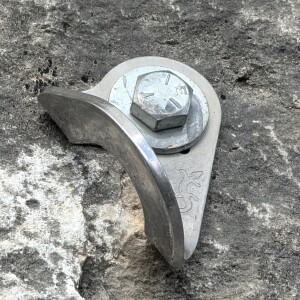
Tuesday Dec 17, 2024
Tuesday Dec 17, 2024
Climbers modify the rock to climb safely, leaving permanent anchors for catching falls. This was not always the practice, and its early implementation lead to a period of conflict in the climbing community when ethics were in flux. Climbing has solved this dilemma, and can show the world how to walk reframe the line between environmental sustainability and land use.
Name and title of interviewees:
Dan Earhart, MS, Climbing Coordinator, Stanford University
Jane Willenbring, PhD, Professor of Earth and Planetary Systems, Stanford University
Hugh Driscol, Principal and founder of Chord Architecture in Santa Fe New Mexico
Emma Harrison, PhD, Environmental Scientist, advocate.
Rupesh Chhugan TCMP, CHP, Hakomi practitioner.
Music Attribution (In order of appearance)
Setting Pace by <a href="https://app.sessions.blue/browse/track/290191">Blue Dot Sessions</a>
Road to Petersby by <a href="https://app.sessions.blue/browse/track/285202">Blue Dot Sessions</a>
Hanging Rock by <a href="https://app.sessions.blue/browse/track/290346">Blue Dot Sessions</a>
Bauxite by <a href="https://app.sessions.blue/browse/track/290218">Blue Dot Sessions</a>
KeoKeo by <a href="https://app.sessions.blue/browse/track/290262">Blue Dot Sessions</a>
Evol Triumph by <a href="https://app.sessions.blue/browse/track/290238">Blue Dot Sessions</a>
Capstone by <a href="https://app.sessions.blue/browse/track/285163">Blue Dot Sessions</a>
Set the Tip Jar by <a href="https://app.sessions.blue/browse/track/285159">Blue Dot Sessions</a>
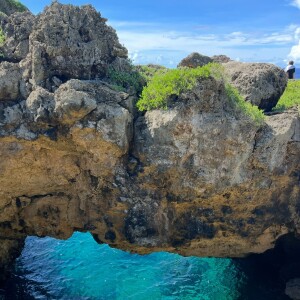
Tuesday Dec 17, 2024
Tuesday Dec 17, 2024
A California-born CHamoru woman’s personal journey discovering how CHamoru became endangered and how Guam’s island community was restoring the language.
Show Notes:Interviews included Antoinette McDaniel, Aunt and Professor studying Chamoru culture; Mark Mendiola, Director of Institutional Advancement University of Guam; Michelle Chrisostomo, Founder of Guahan Sustainable Culture; Anna Marie Arceo, Founder of Chief Hurao Academy; Jesse Charfauros, Father and lifelong mentor(Not included in final episode)Jimmy Teria - CHamoru Language and Culture Specialist Guam Department of Education
Research referenced in this episode.● National Park Service - Guam Study(https://www.nps.gov/parkhistory/online_books/wapa/guam_study.pdf)● Bevacqua, M. L., & Cruz, M. L. (2020). The banality of American empire: The curiouscase of guam, usa. Journal of Transnational American Studies, 11(1), 127–149.https://doi.org/10.5070/t8111046995
● Aguon, J. (2021). The Properties of Perpetual Light. University of Guam ISBN978-1-935198-36-9● Combs, S. (2022, January 26). In WWII, the Japanese invaded Guam. now they’rewelcomed as tourists. History.https://www.nationalgeographic.com/history/article/wwii-japan-invaded-guam-now-welcomed-touristsAudio Stories:● The Sunday Read: ‘The America That Americans Forget’:https://www.youtube.com/watch?v=MbfkKeLKFZ0● PBS Guam - War For Guam:https://www.youtube.com/watch?v=moBvsySdCHs&t=2124sAcknowledgments for any music you used (artist, song title).(Pacha Faro, Car Ride)(Cranberry House, Cruxis)(The Caravan, Waiting At Dawn)(Sketchbook, Contrarian)(Earthmover, The Melt)
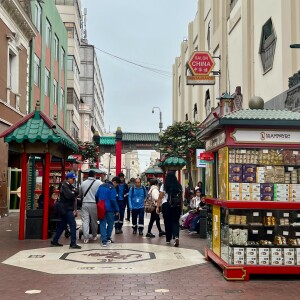
Tuesday Dec 17, 2024
Tuesday Dec 17, 2024
This episode explores the story of Lima’s Tusán—Peruvian Chinese—community, examining their influence on Peruvian culture and identity through Chifas, restaurants serving Peruvian-Chinese cuisine. From the history of Chinese immigration to Peru to today’s Barrio Chino (Chinatown), I consider what it means to assimilate, belong, and transform.
Featured Interviewees:● Rodrigo Campos, Founder of Tusanaje● Diana Hu Huang, Mandarin Chinese Teacher● Linda Liu, Master’s Student● Antonio Chang Diplomat and HistorianNon-Featured Interviewees:● Boya Li, PhD. Journalist, Historian● Dennis Chu, Owner of Flor de Mayo Restaurant in NYC● Lok Siu, PhD. Professor of Ethnic Studies at UC Berkeley● Sutee Dee, Author of How to Eat in Peru Blog● Tiffany Wang, prev. Researcher at SwarthmoreResearch Referenced:● https://www.pewresearch.org/2024/08/06/chinese-americans-a-survey-data-snapshot/#:~:text=About%204.7%20million%20Chinese%20Americans,born.● https://www.npr.org/sections/codeswitch/2013/11/25/247166284/a-history-of-indentured-labor-gives-coolie-its-sting● https://www.thecleaverquarterly.com/stories/chifa-diaries● https://www.howtoeatinperu.com/p/four-things-that-i-missed-about-peru● https://en.wikipedia.org/wiki/Chinese_Peruvians● https://penntoday.upenn.edu/news/chinese-peruvian-tusan-immigrants-history● https://www.tusanaje.org/biblioteca/items/show/15● https://panoramas.secure.pitt.edu/health-and-society/chinatown-peru-brief-look-chinese-diaspora-latin-america● https://works.swarthmore.edu/cgi/viewcontent.cgi?article=1599&context=theses● https://www.pbs.org/ancestorsintheamericas/fabiana_1.html● https://shs.hal.science/halshs-00598155/document● https://en.wikipedia.org/wiki/Mar%C3%ADa_Luz_incident● https://en.wikipedia.org/wiki/Chinese_Peruvians● https://oxfordre.com/latinamericanhistory/display/10.1093/acrefore/9780199366439.001.0001/acrefore-9780199366439-e-1023?p=emailAaYgy7EkN7aao&d=/10.1093/acrefore/9780199366439.001.0001/acrefore-9780199366439-e-1023● https://thediplomat.com/2019/03/the-evolution-and-preservation-of-chinese-peruvian-identity/
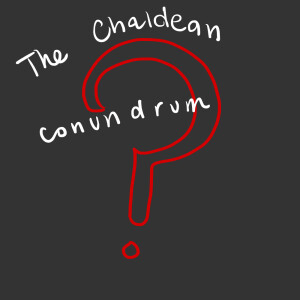
Tuesday Dec 17, 2024
Tuesday Dec 17, 2024
Fadie Arabo's story is about uncovering the Chaldean identity: What it means to him and how it has changed since coming to Stanford.People interviewed:Dr. Dean Winslow: Medical doctorTerezsa Arabo: Young ChaldeanRami Sarafa: Harvard BusinessKen Alyass: Harvard HistorianZiyad Gawis: El-Cajon ChaldeanZena Roumaya: MotherCal Abbo: Chaldean News EditorJohn Kurikuz: Chaldean Stanford Alumni
Research drawn from the following sources:
https://www.chaldeannews.com/
https://www.chaldeannews.com/2023-content/2023/12/1/who-are-the-chaldeans
Music Acknowledgementshttps://www.soundsnap.com/tags/cashier: 1https://pixabay.com/music/search/flight/: 3https://www.soundboard.com/sb/sound/1105823#google_vignette: california lovehttps://pixabay.com/music/search/arab/: 4
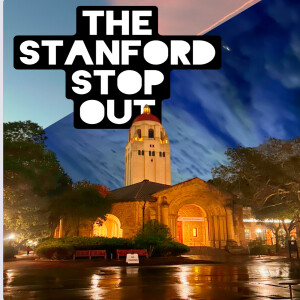
Tuesday Dec 17, 2024
Tuesday Dec 17, 2024
What does it mean to come face to face with failure as a student at an 'elite' school? What advice do alumni, advisors, and professionals have to share about wellness, academic competition, and perfectionism? And is there a secret to surviving in today's age of a dangerous productivity culture? Can you come back from burnout? Tune in :)- Maija Cruz- Cari Costanzo- Thomas Curran - 10% Happier Podcast- Nowhere to Run instrumental - Stegosaurus Rex- Symphonia IX Instrumental - Current Joys- Hail, Stanford, Hail - Stanford Choir
2023 Braden Storytelling Grant







